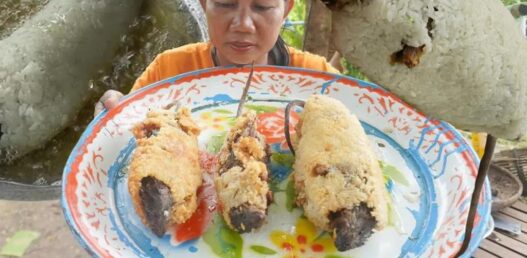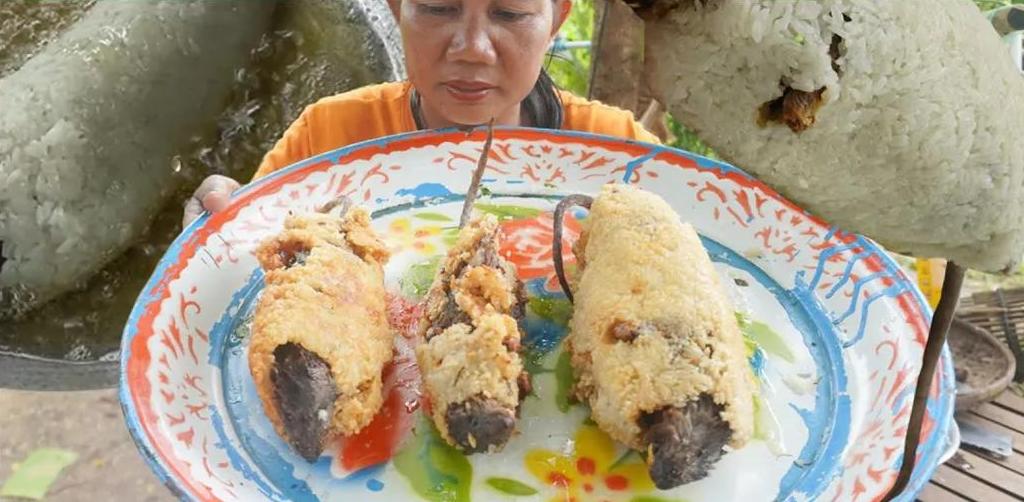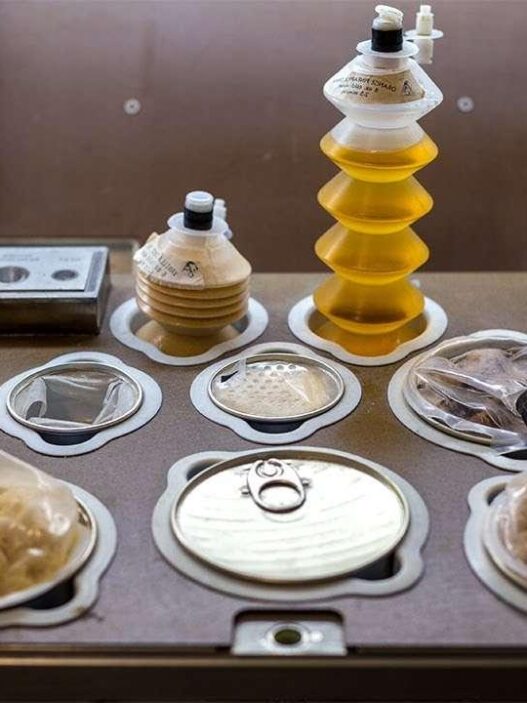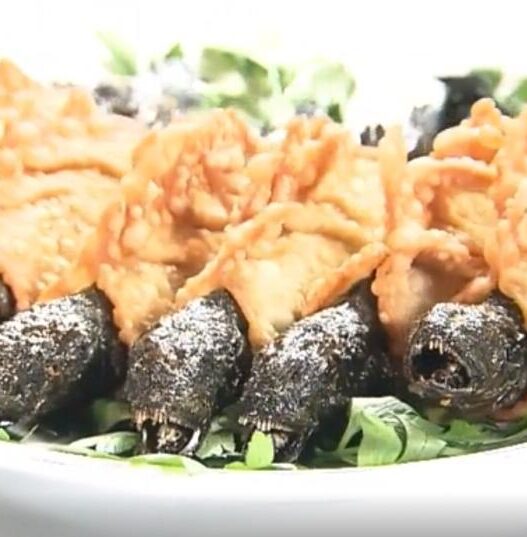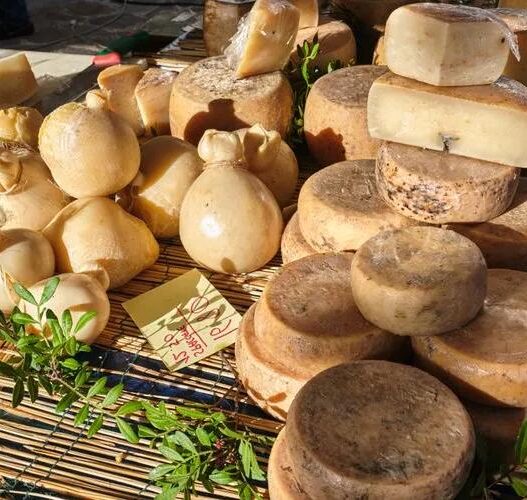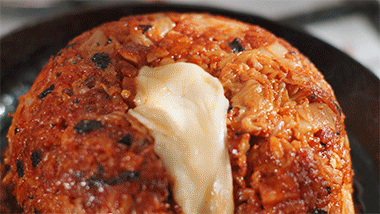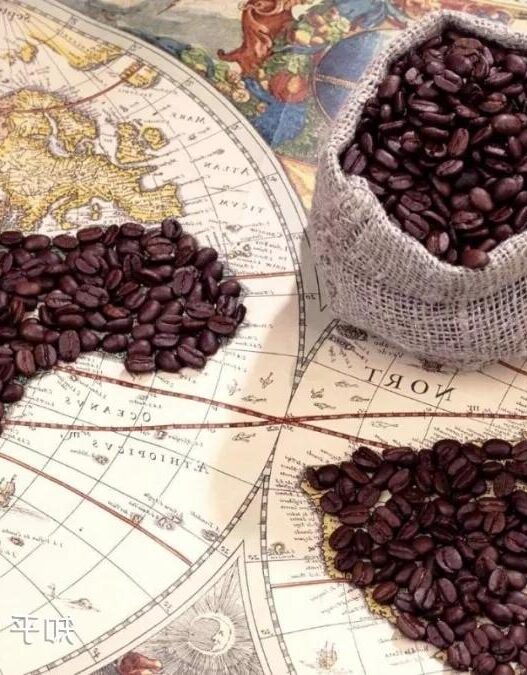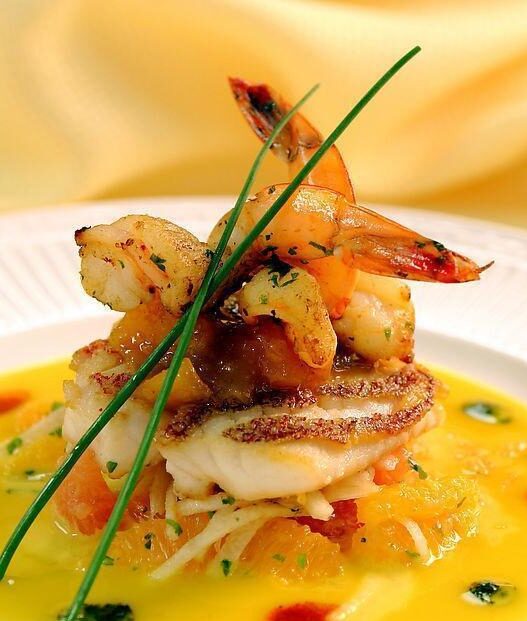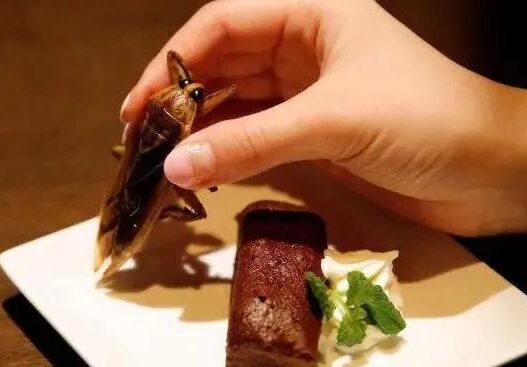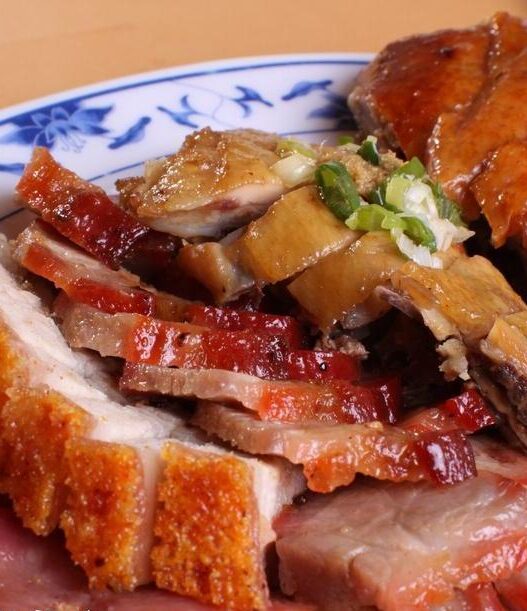In Vietnam, even the wildest mice have their final resting place.
Although in the Vietnamese zodiac, the cat replaces the rabbit, relying solely on cats to manage the rat population is not entirely practical. When rats are considered food, all problems seem to be solved effortlessly.
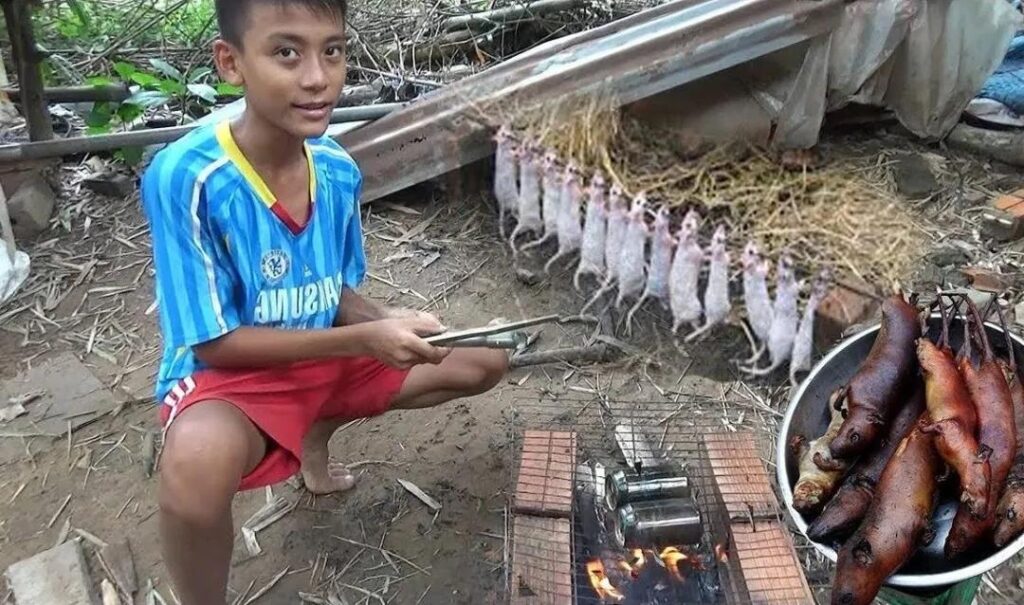
Some Vietnamese people have their own unique techniques for cooking mice.
“Grilling is the ultimate respect for these wild spirits; it preserves the deliciousness of the rat meat to the greatest extent. Hot pot, on the other hand, uses low-temperature cooking to lock in the nutritional essence of the meat. However, rat sashimi is not recommended as it might contain unclean parasites.”
When you want to experience a different Southeast Asian charm, Vietnamese Mouse Rice might be your last stop.
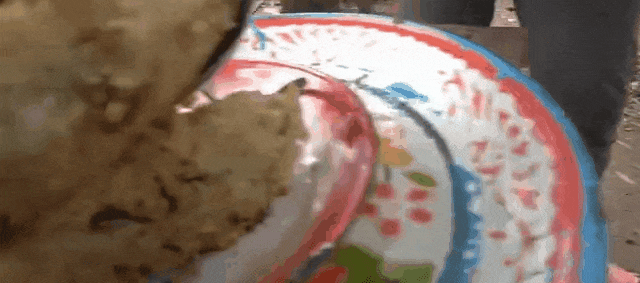
This is a homely dish where mice are wrapped in rice and then deep-fried, holding a special status in Vietnam. It provides ample carbohydrates, protein, and unique vitamins, enough to make you dance in the dark alleys of Nha Trang.
Mouse Rice is the rural Vietnamese sandwich. When processing, the internal organs of the mice are not removed, allowing you to enjoy the dual taste sensation of rat meat and offal. Some describe this complex life experience as being stuck on the bridge to the afterlife, with navigation failing and no way to cut in line, forcing you to silently accept this bizarre illusion and the nudges from the spirits behind you.
For first-time consumers of rodent cuisine, it’s not a friendly experience. The overwhelming absurdity leaves an indelible mark on your Vietnamese journey. The next time you visit Disney, seeing Mickey smile at you might evoke an ominous sign.
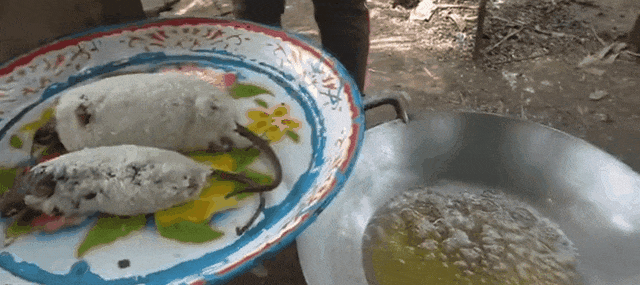
Even if you have a deep cultivation in the world of dark cuisine, you might still take a sharp breath in front of Mouse Rice, a breath that carries the mouse’s last shriek, its unresolved cries, and the rich, enticing aroma.
The sweet, sticky Vietnamese rice becomes crispy and golden like the chocolate shell outside Mickey’s house. These seemingly trained mice, carrying one carbohydrate bomb after another, surge towards your cardiac sphincter, pylorus, and, well, you know, dancing with you, then perishing together, overturning all earthly pleasures between life and death.
Not everyone can handle this authentic Vietnamese delicacy. Puzzled eyes replay the final scene of “Tom and Jerry,” where Jerry, cornered by Tom, is enlightened by humans and ascends. This is a Southeast Asian food fairy tale, “The expressions on people’s faces do not lie.”
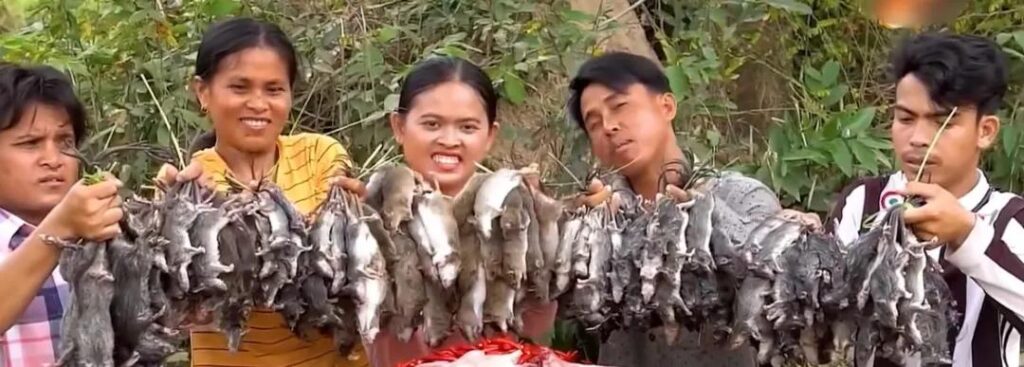
Rats stole humans’ rice, and Vietnamese people stole the rats’ souls.
Compared to cats, Vietnamese rats are more afraid of Vietnamese people. When an experienced rat-catcher from Saigon, with a deep, smoky voice, whispers “Em yêu Anh đang ở đâu? (Where are you, my dear?)” into a hidden burrow, even the most battle-hardened rat leader can’t resist this straightforward curse.
They pause, bow their heads, surrender, with empty gazes, abandoning all competition for food and mating.
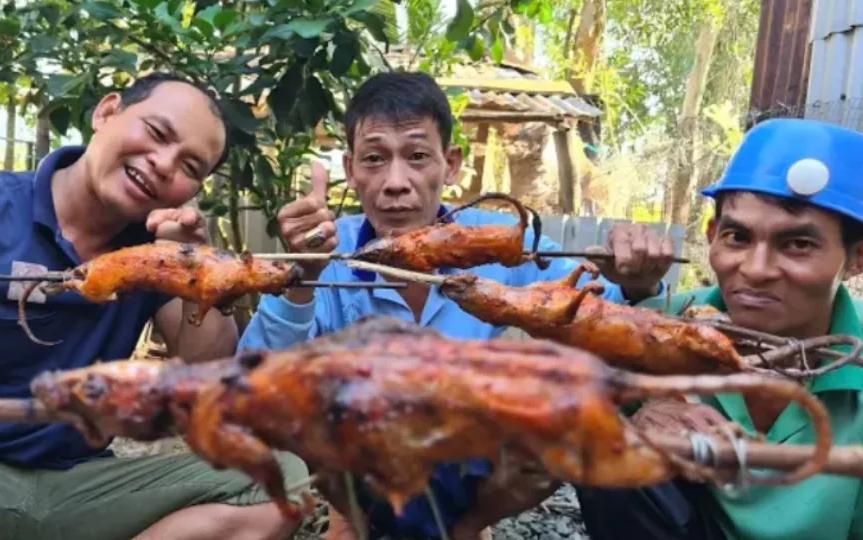
The professional rat catchers in Vietnam’s Soc Trang Province have an even simpler command.
Before catching rats, some farmers make sounds like “Dad, dad, dad” at the burrow entrance. Just as Chinese village dogs can’t resist the sound of “Suck, suck, suck,” Vietnamese rats get particularly excited when they hear the call of “Dad.” They run out to check, only to be caught in traps set at the burrow’s mouth. Even then, the captured rats continue to shout, thinking they’ve entered a life of luxury.
Nguyen Thanh Dien, a farmer from Hu De Commune in Zhou Cheng District, once bought a combine harvester with the money he earned from catching rats, truly achieving harvesting freedom. He ensures each rat he catches weighs enough for the market, releasing smaller ones to grow in friends’ fields. Only those over 3 kilograms can fetch a good price in the market, with prices ranging from 60,000 to 90,000 Vietnamese dong (about 17-26 RMB) per kilogram.
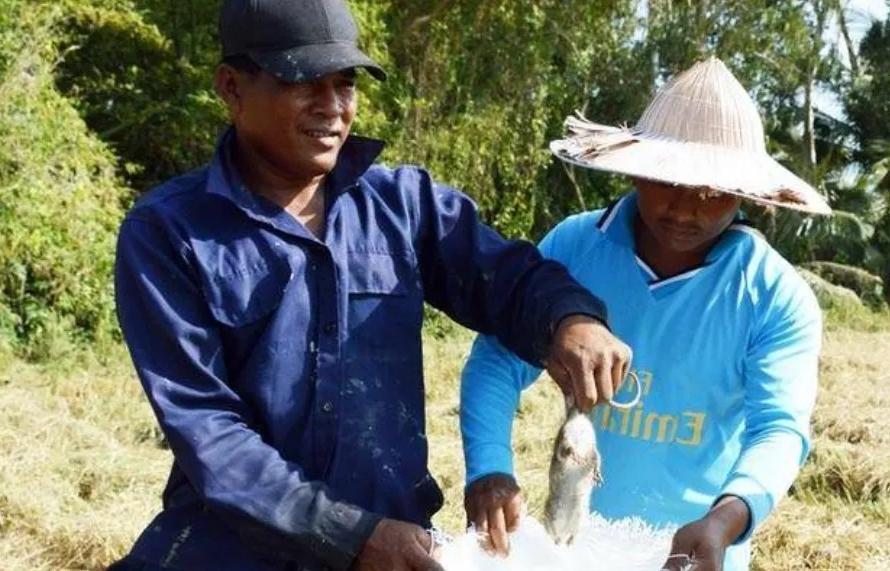
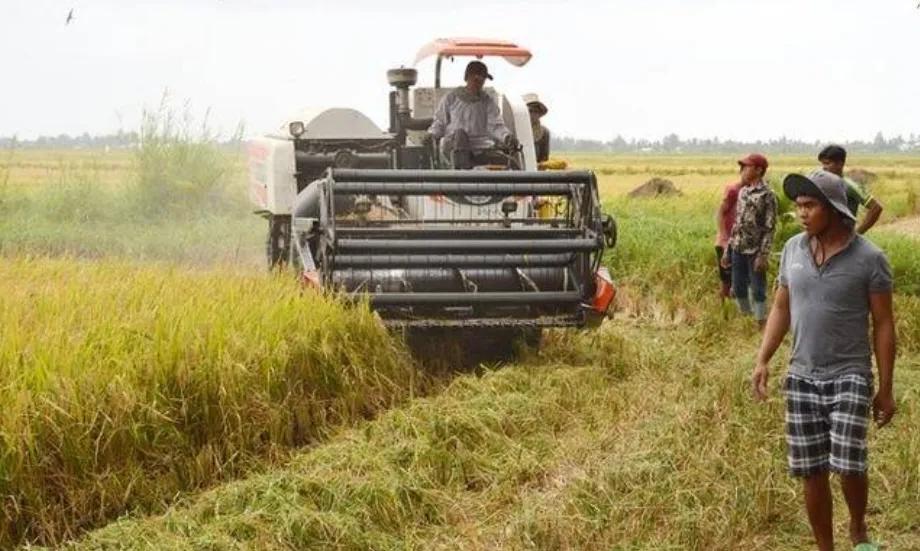
Vietnam’s fields hide countless treasures, often in groups, committing crimes, and then collectively surrendering. The strong demand in the market allows many hardworking Vietnamese farmers to live well.
Some even say that the income from catching and selling rats is much higher than from farming. In the dead of night, you often see headlamps moving through the fields, their faint light illuminating the faces of rat catchers and their tomorrows. Due to the limited number of rats, even if a robust rat couple reproduces non-stop for 24 hours, they can’t meet the demand for food in Vietnam.
So, you often see Vietnamese people sneaking into others’ fields in the middle of the night, not to steal vegetables, but to steal rats.
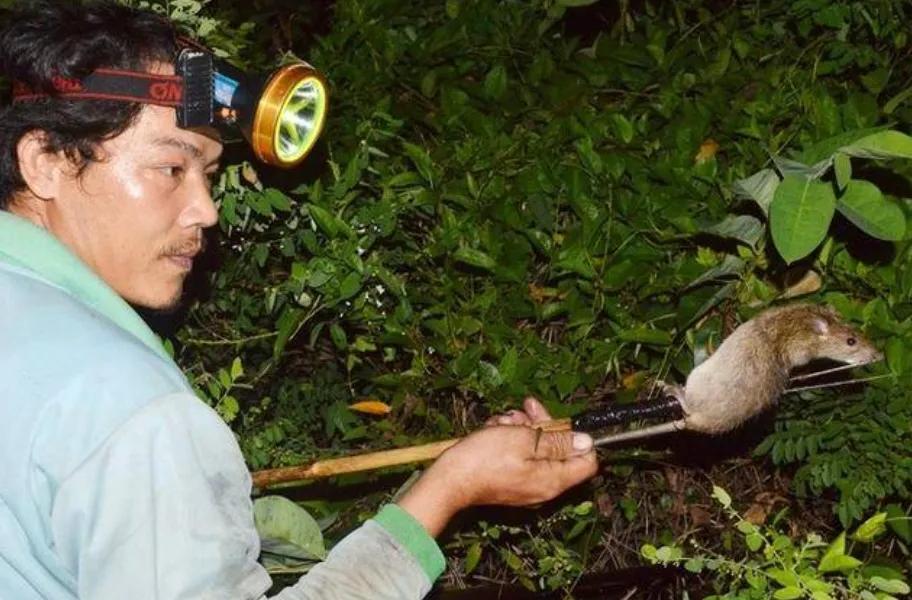
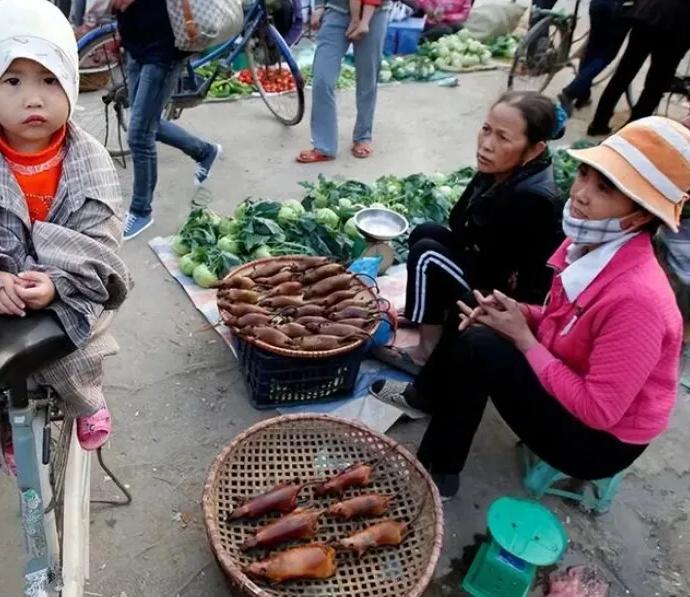
Not all rats qualify to enter the market. Vietnamese people mostly catch and eat field rats, which are skinned and then marinated with green plants from their habitat, sold as pre-cooked dishes.
Vietnamese people have developed numerous ways to cook rats, but they seem to have a special affection for “Mouse Rice.” After all, it’s a fusion of two of their favorite foods, and happiness should be doubled.
When making Mouse Rice, people first bathe these adorable creatures in 70-degree water, where the field mice peacefully close their eyes, allowing human fingers to caress and touch them.
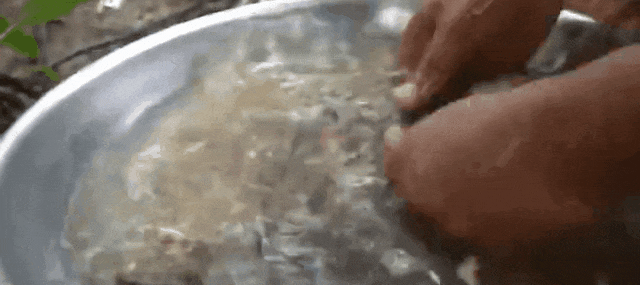
Then, these wild ingredients are coated with low-gluten flour and combined with their favorite staple, rice, in a permanent union.
This arrangement is both conflicting and romantic, like a drunkard embracing their favorite liquor.
Tossed, then squeezed, a skilled Vietnamese housewife can make enough “Mickey Rice” for a family dinner in ten minutes.
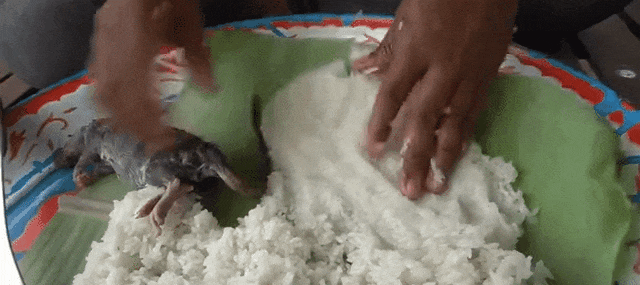
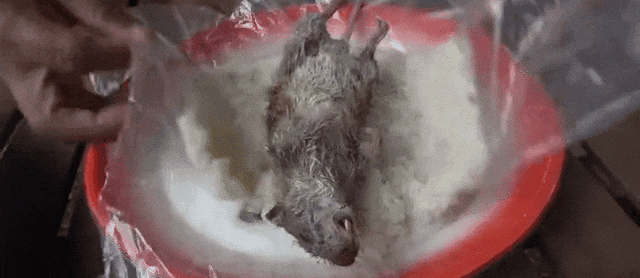
For children, these handmade rice wraps, which outsiders might not understand, carry the taste of their mother. Adult field rats can be made into rice wraps, grilled skewers, or served raw. Some baby rats can even be made into “Palm Treasures,” with “tastes better than chicken cartilage.”
Those sleepy-eyed baby rats are Vietnam’s “Mouse Treasures,” “Even if released into friends’ fields, they can’t survive on their own, so it’s better to let them reunite with their parents.”
And it seems that the simplest cooking method brings out the natural flavors of these miniature ingredients best.
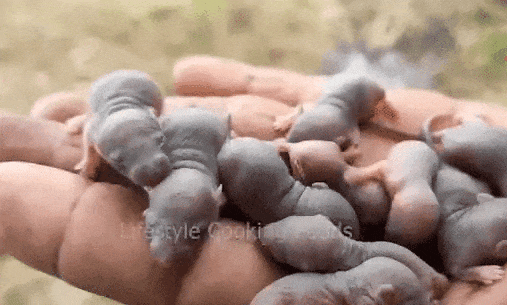
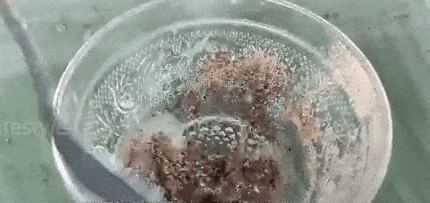
The Vietnamese have a deep affection for rat meat. Nowadays, there’s also a significant amount of bamboo rat farming in the country, but one must remain cautious when consuming it. Although we’ve tried all sorts of bizarre foods from around the world, rat meat remains one of the many red lines.
The special feelings Vietnamese people have for rat meat come from times of material hardship when there was an extreme need for animal protein. When they saw plump, juicy field rats running through the fields, some forward-thinking Vietnamese decided to give it a try, much like our ancestors tried hairy crabs and crayfish. Once a species is considered food, its connection with humans becomes very close.
Now, the field rat farming industry in Vietnam is also very hot. In some Vietnamese streets, you can see shops specializing in selling field rat meat. People buying freshly picked and slaughtered rats is as normal as going out to buy a dough stick.
Despite still not being understood by the world, many Vietnamese people don’t seem to care about external gazes; as long as they’re full, that’s all that matters.
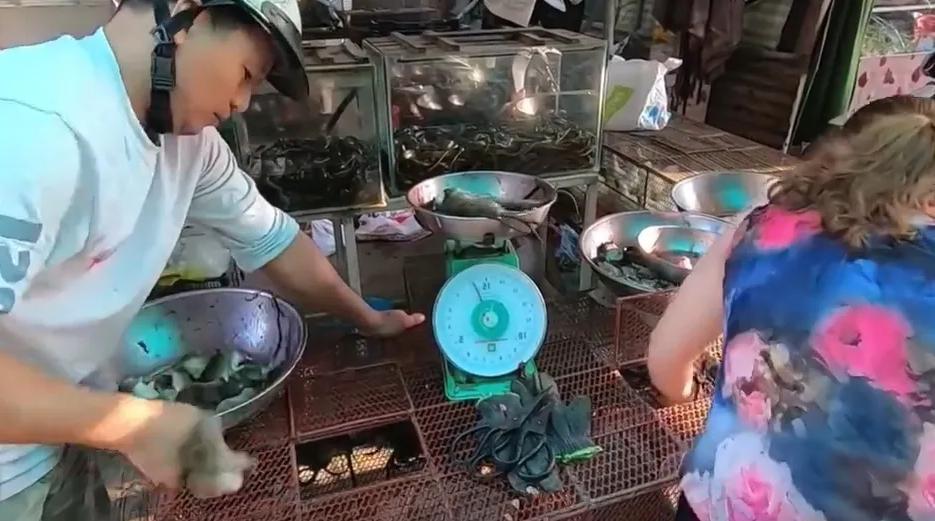
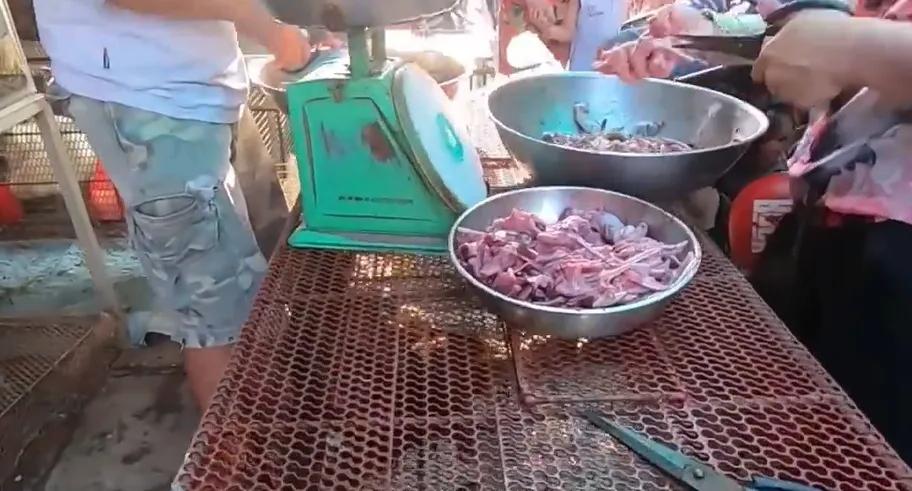
Those mysterious and deep Vietnamese love whispers still echo in the rural night of Vietnam, “Em yêu Anh đang ở đâu? (Where are you, my dear?)”







